With the remarkable advancements in science and technology, humanity has created extraordinary artificial rain…
“Rain or shine is a matter of nature”, this viewpoint is not incorrect, and no one denies it. In the past, humans depended heavily on nature, and aside from praying to deities and conducting rain ceremonies, we were nearly powerless against the whims of the weather.
However, with significant advancements in science and technology, humans have learned to create rain, no longer relying on faith as they did in the past. Let’s explore the technologies that have replaced the work of the “rain gods” through the following research.
1. Cloudbuster
In the 1950s and 60s, the first rain-making machine in the world was invented by Austrian psychoanalyst Wilhelm Reich. However, the method’s validity was met with skepticism from the scientific community as he utilized orgone energy—energy from the universe—to produce rain.
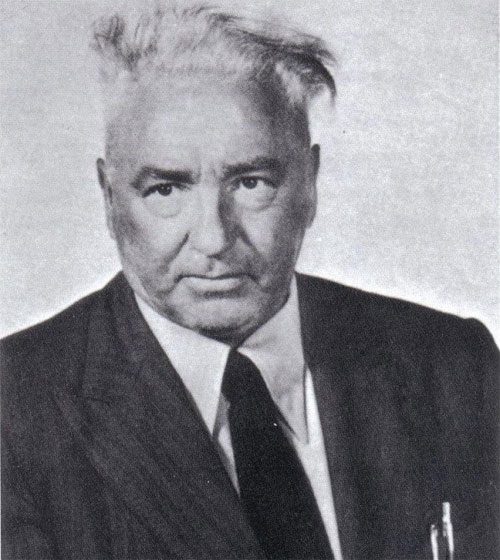
Portrait of Wilhelm Reich
To achieve this, he designed a machine to capture orgone energy. The Cloudbuster consisted of hollow metal tubes positioned parallel to each other, with one end facing the sky to collect energy, and the other end connected to smaller tubes leading to a water container.

Wilhelm Reich and his Cloudbuster
Reich claimed that with this device, he could gather or disperse clouds at will, thereby creating or stopping rain, and if upgraded and controlled by someone with expertise, it could even create tornadoes.

Reich’s notes on the operation of the machine
It may sound absurd, but it yielded astonishing results. In 1953, blueberry farmers in Maine, USA, hired Reich to “break the drought” to save their harvest. Reich agreed and installed a Cloudbuster, which operated for just over an hour, and the next morning, a heavy rain arrived.
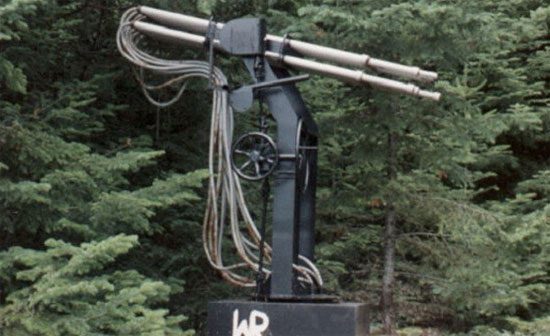
An old remaining Cloudbuster
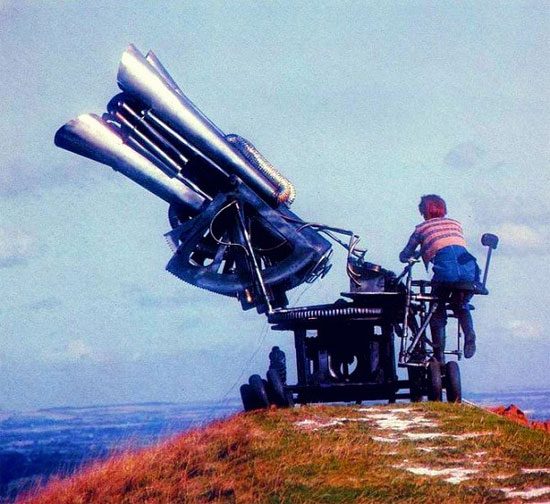
An improved Cloudbuster
However, Reich’s “rain-making” attempts were still met with skepticism and labeled as “luck.” To this day, research and use of cosmic energy are not fully recognized or popular in the scientific community. Nevertheless, Reich and his device are considered some of humanity’s first efforts to create rain.
2. Cloud Seeding
Cloud seeding is a method that can alter the amount or type of rainfall by dispersing special chemicals into the atmosphere, such as water vapor condensation agents or ice nuclei, to change the physical processes of rainfall.
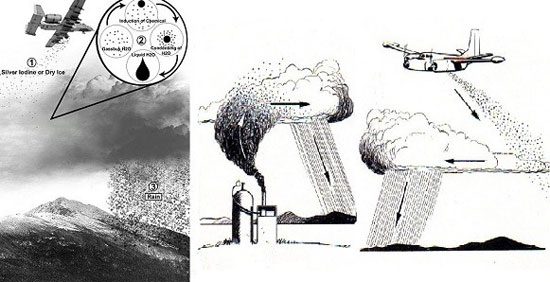
Cloud seeding method
The chemicals used include silver iodide, aluminum oxide, and dry ice. Additionally, for warmer clouds, scientists have researched using salt and liquid propane (C3H8).
Essentially, these chemicals stimulate the rapid condensation of rain droplets in the air, with the amount and form of rainfall depending on the quantities of chemicals needed to be “seeded.”
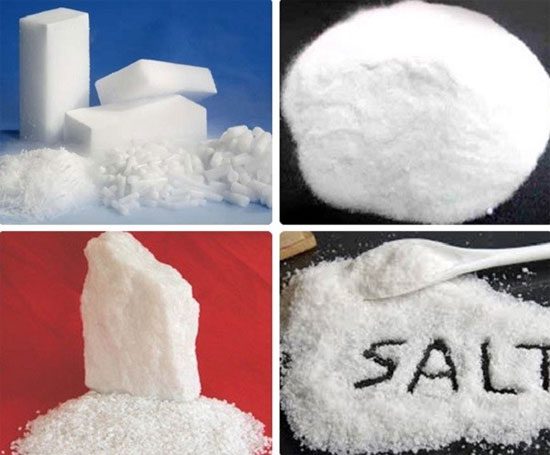
Chemicals used such as dry ice, silver iodide, aluminum oxide, salt…
This innovative idea was conceived and researched by scientist Vincent Schaefer, later developed by Bernard Vonnegut, who identified suitable and more effective chemicals. The chemicals are “seeded” into the sky by aircraft or shot from the ground.
Before conducting “seeding,” natural factors such as wind direction and convection currents must be meticulously and accurately checked. Currently, this method is quite commonly used in many countries around the world, including the USA, Australia, China, India, and some African countries…

Seeding chemicals using aircraft
Not only is this method used to create rain and increase rainfall, but it is also applied to mitigate hail and heavy snow, as well as fog. While chemicals are used, this method does not significantly harm the environment.
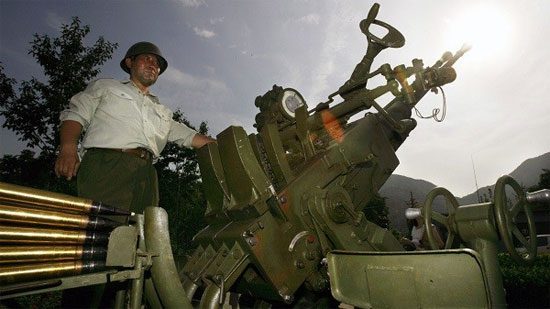
Seeding chemicals from the ground using guns
In practice, the “cloud seeding” method has proven effective by alleviating numerous droughts and dispersing many hailstorms and fog problems.
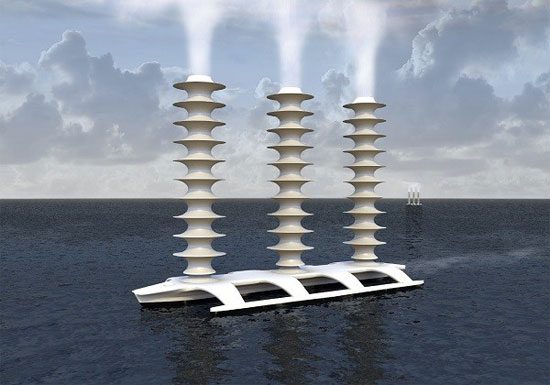
Seeding chemicals from the ground using boats
Few people know that it was used by the U.S. military during the Vietnam War. The U.S. conducted a total of 2,600 flights and dispersed over 47,000 units of silver iodide, causing continuous rainfall for more than 30 days along the Ho Chi Minh Trail, effectively flooding sections of it under the motto “turning the road into mud, cutting the war’s supply lines.” Today, the “cloud seeding” method continues to be researched, developed, and gradually popularized.
3. UAE Ion Generation Devices
The United Arab Emirates (UAE) is a region renowned for its rich mineral resources, especially oil. However, the UAE is situated in a harsh climate—hot and dry—with very little rainfall, averaging only 110mm per year.
This is the reason why President Sheikh Khalifa bin Zayed Al Nahyan of the UAE was deeply concerned. He established a team of the nation’s leading scientists who worked secretly and tirelessly for many years to address this climatic issue.
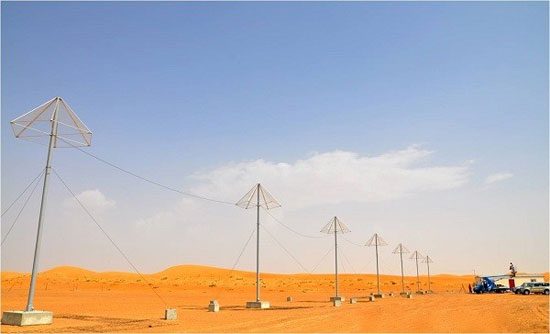
UAE Ion Generation Devices
The result was the creation of the largest ion generation device in the world. These devices were constructed by a Swiss company and resemble a giant tree stretching high into the sky.
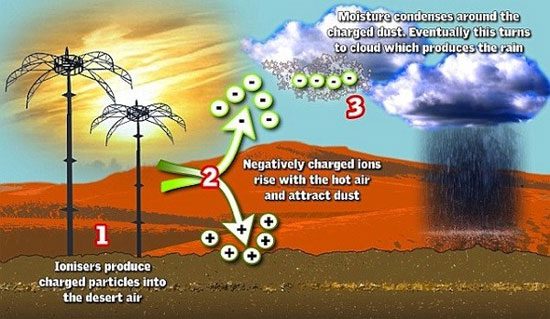
Principle of operation of the device
This device emits charged streams over a vast area; positive ions “sink” to the ground while negative ions carry dust particles in the air and “rise” up. The airborne particles will condense to form a large cloud area, gradually accumulating moisture and creating rain.

Similar Equipment Setup in Australia
The system operates under the condition that the relative humidity in the air must reach a minimum of 30%. Currently, this equipment system is still in the research and development phase and is functioning in several regions of the United Arab Emirates (UAE) with substantial financial support from the UAE’s oil billionaires.


















































